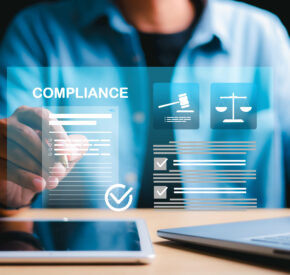Accessibility in the Digital Age: A Primer on the ADA
The Americans with Disabilities Act (ADA) and implications for digital accessibility

We are often asked what does the Americans with Disabilities Act (ADA) really have to do with digital accessibility? This is a quick primer on how the ADA and Digital Accessibility, commonly referred to as ‘a11y’ intersect. The acronym ‘a11y’ comes from the fact that the word accessibility has 13 total letters and 11 letters in between the ‘a’ and the ‘y’. It’s much faster and easier to type ‘a-1-1-y’ than ‘digital accessibility’ over and over. Plus, it’s always better to have allies in our work!
Why digital accessibility (a11y)
While it doesn’t feel that long ago, the Americans with Disabilities Act was was passed and signed into law in 1990, before the Internet existed. Therefore, until a revision is written into the federal legislation, it is up to case law through lawsuits to define Web/Digital Accessibility. There are five Titles (sections) of the ADA:
Title I – Employment
Title II – Public Services (government)
Title III – Public Accommodation
Title IV – Telecommunications
Title V – Miscellaneous
While one might think that Title IV might capture digital accessibility, unfortunately, it was written narrowly to ensure that telephone companies provide services for those with speech and hearing disabilities. Therefore, Titles I and III are most commonly cited as most pertinent to most businesses and the ones we will focus on here.
Title I – Employment
Businesses are required not to discriminate against applicants or employees with disabilities. Increasingly, businesses are being required to make sure that their internal digital resources are accessible to their employees with disabilities. This includes:
- Documents in common formats such as Word, PDF, etc.
- Access to Assistive Technology
- Internal or intranet web pages
- All other employee communications, including messaging platforms
According to the most recent Bureau of Labor Statistics report, 8 in 10 or 80% of people with a disability are not in the labor force. This is due to many factors, but it demonstrates the huge untapped potential of this particular population of Americans.
Larger companies with more resources are able to ensure that people with disabilities who want to work, can through a combination of internal digital accessibility compliance and structures that allow for some flexibility in productivity, including part-time work.
As with most things when a company ensures documents, intranets, and other employee messaging platforms are accessible, it creates clearer communication for everyone. Things like good semantic structure, ordering of thoughts, proper use of headings in documents and pages, understandable language choices, etc. are all things we should be doing to benefit everyone.
Title III – Public Accommodations & Commercial Entities
Businesses conduct their business with the public on the web. Think of this as a ‘virtual front door.’ Just like in the physical world, it needs to meet certain standards so no one is deprived access to those goods and services. This is considered ‘public accommodation’, and it must meet the legally defensible standards for digital accessibility just as it would in the physical sense. Case law has been extremely active in this area and if trends hold, will only increase year over year.
The sheer number of lawsuits being filed has steadily increased each year. The WSJ noted in a 2021 article that lawsuits jumped 64% in just the first half of 2021. One of the top advocates in this area of law is Lainey Fiengold. She maintains legal updates as well as her own settlements page here.
There is certainly risk in this area for businesses that sell directly to consumers. Companies that range from Nike to Dominos to the Queen B herself, Beyonce, have all been sued because their websites were not digitally accessible. While ensuring your company avoids a demand letter or a lawsuit is a perfectly reasonable reason to ensure your website is compliant with current standards, we often argue at Tamman, that it makes good business sense to pursue accessibility so you’re not excluding any potential customers. Many of the same guidelines necessary for websites to be accessible are also excellent common sense choices that will make it easier for all customers to navigate your site.
There are a couple of important caveats to make sure folks are aware of when we say compliant. There is no federal law requiring one standard, but most people today have settled on the standard, WCAG 2.1 AA.
WCAG (‘Woo-Cah-ag’ or ‘w’-‘c’-‘a’-‘g’ are both common pronunciations) is the Web Content Accessibility Guidelines maintained by the non-profit the World Wide Web Consortium (W3C) and they are on version 2.1. There are three ratings levels, A, AA, and AAA – each growing in strictness with the number and type of compliance guidelines. This body of international experts are consistently trying to improve and provide recommendations on digital accessibility.
The second caveat is around something called an overlay. This is a piece of external software that is layered onto an existing site that attempts to convert or smush a site into being accessible. Tamman has written about overlays previously, but please don’t use them. Certainly don’t use them at first. More and more lawsuits are using overlays as a specific piece of evidence that companies knew accessibility was important and tried to take the easy way out instead of coding it correctly. Over 250 lawsuits in 2020 cited the use of overlays against defendants.
In addition to being poor practice and not promising on what they deliver, overlays:
- Do not fix underlying issues like missing alternative text, keyboard use, proper heading or content order
- Many disabled users already have competing assistive technology to make their browsing experience better and overlays get in the way of that
- Gets in the way of good ux and sometimes the performance of the site
State Level Interactions &
California, a pioneer in civil rights legislation at the state level, has led the way with its Unruh Civil Rights Act. This trend is spreading, with states like Colorado mandating WCAG compliance through statute, rather than relying on case-by-case decisions. By proactively addressing these evolving legal requirements, businesses who choose to be at the forefront reduce their risk exposure.
The risks of inaction by businesses are clear, but those companies that take proactive and thoughtful approaches to compliance will find that it not only lowers their risk, but it’s good for business and customers too. Not everything has to be accomplished in one fell swoop either. Often, accessibility can be prioritized and incrementally improved upon with a good roadmap.
Isn’t that true about most business issues?





